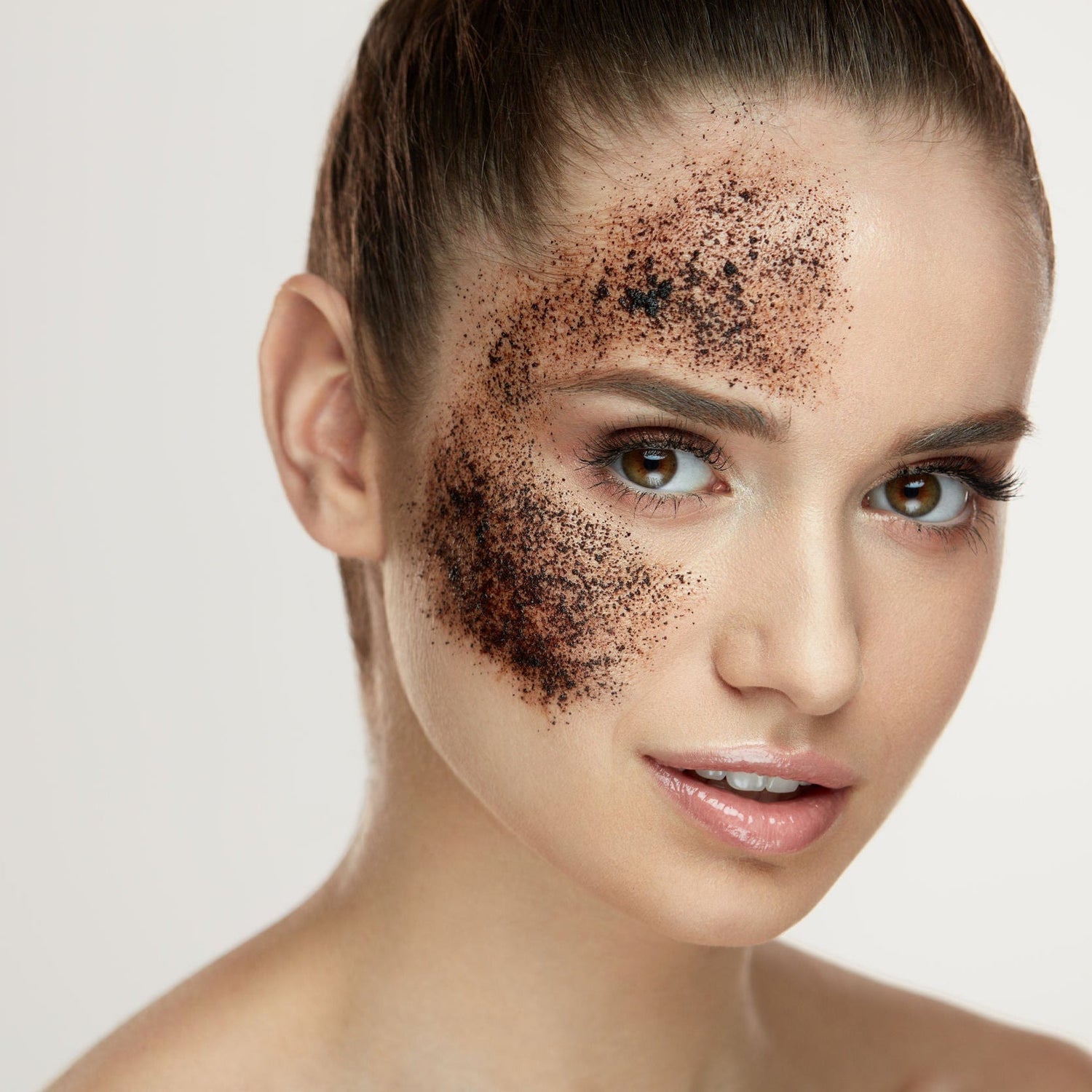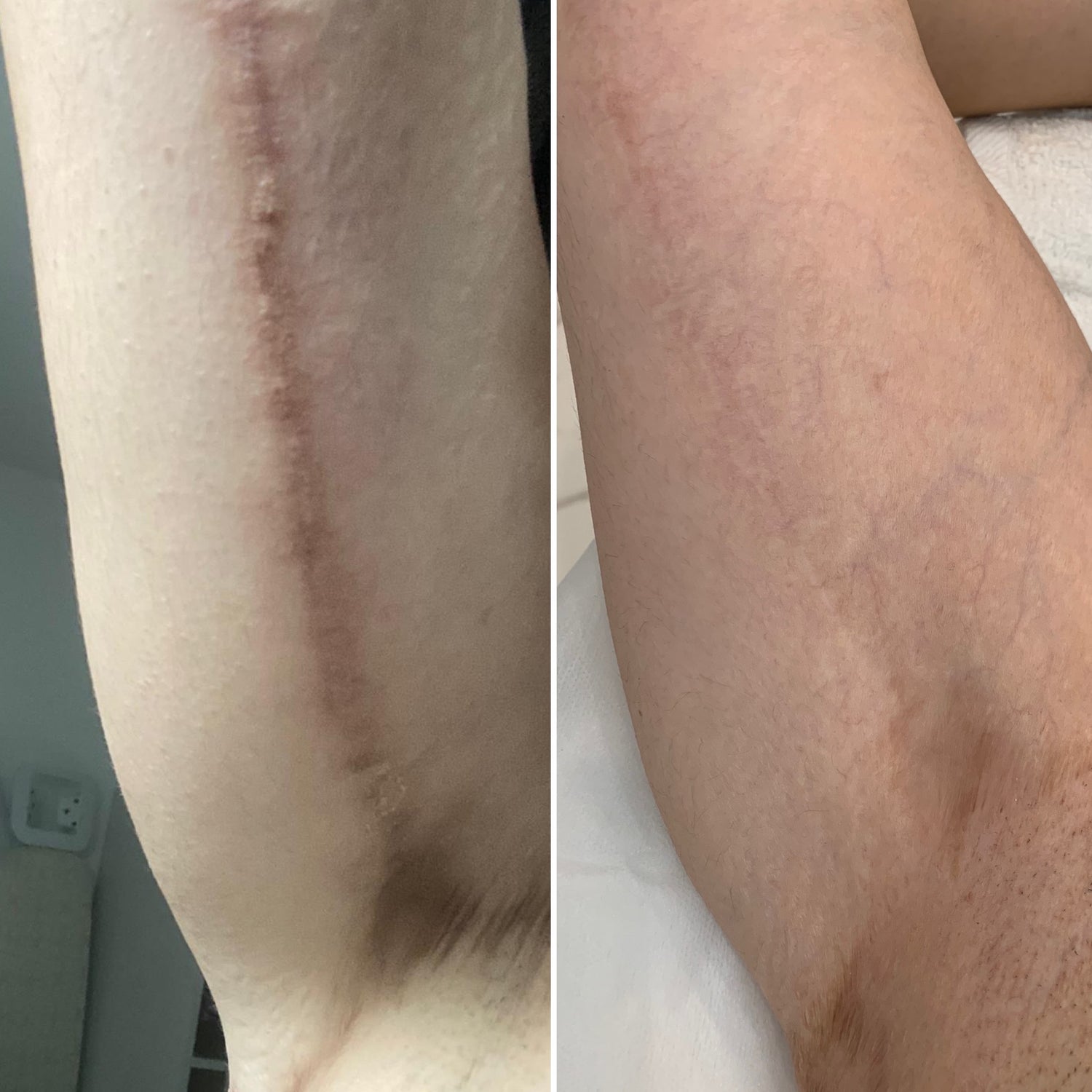Scars

various non-invasive methods for scar reduction
Narben – Funktionelle Reparatur, ästhetische Herausforderung
mehr Erfahren
Narben sind das sichtbare Resultat eines komplexen, biologischen Reparaturprozesses der Haut. Nach Verletzungen, Entzündungen oder chirurgischen Eingriffen ersetzt der Körper das zerstörte Gewebe durch faseriges Ersatzgewebe, um die Integrität der Hautbarriere schnellstmöglich wiederherzustellen. Dieses neu gebildete Gewebe ist jedoch funktionell eingeschränkt: Es enthält weniger Kollagen Typ I, kaum Elastin und besitzt daher eine geringere Festigkeit und Elastizität. Auch der normale Zellaustausch ist stark reduziert.
Nicht alle Narben sind problematisch – die häufigste Form ist unkompliziert und bleibt beschwerdefrei. Es gibt jedoch verschiedene Narbentypen, die funktionell oder ästhetisch relevant sein können. Hypertrophe Narben und Keloide entstehen durch eine überschießende Kollagenproduktion und können wulstig, gerötet und druckempfindlich sein. Atrophische Narben, wie sie häufig nach Akne auftreten, zeigen sich als Vertiefungen im Gewebe und führen zu einem unruhigen Hautrelief. Sklerotische Narben sind verhärtet, unelastisch und können – je nach Lokalisation – sogar Bewegungseinschränkungen verursachen.
Unser therapeutischer Ansatz zielt darauf ab, das Narbengewebe funktionell zu verbessern, seine Elastizität zu steigern und die Hautoberfläche zu harmonisieren. Je nach Narbenart kombinieren wir verschiedene, medizinisch fundierte Verfahren: fraktioniertes Microneedling oder Radiofrequenz-Needling zur Stimulation der Kollagenneubildung, Mikroplasma oder Lasertherapie zur Gewebsrestrukturierung, sowie enzymatische oder chemische Peelings zur Glättung der Hautoberfläche. Ergänzend kommen regenerationsfördernde Wirkstoffe wie Peptide, Retinol-Derivate oder Wachstumsfaktoren zum Einsatz, um die Hautheilung auf zellulärer Ebene zu unterstützen.
Wichtig ist eine fachgerechte Durchführung – zu aggressive oder zu tiefe Behandlungen können das Risiko einer zusätzlichen Vernarbung erhöhen. Deshalb legen wir besonderen Wert auf eine präzise Hautanalyse und ein individuell abgestimmtes Behandlungskonzept. Nur so kann die Narbenkorrektur effektiv, schonend und sicher erfolgen.
Regelmäßige Sitzungen sind entscheidend, da die Umstrukturierung von Narbengewebe ein langsamer biologischer Prozess ist. Mit jeder Behandlung verbessert sich die Hautstruktur sukzessive – Unebenheiten werden geglättet, das Gewebe geschmeidiger und das Hautbild gleichmäßiger.
„Wo Heilung endet, beginnt Ästhetik – gezielt und professionell begleitet.“
TYPES OF SCARS - different types of SCARS and their treatment
-
CLASSIC SCAR
normal healing process after an injury in a shallower skin layer
Symptoms:
- optical & aesthetic disorder
- no functional limitation
Treatment:
- Timely treatment with ointments is recommended
- Causing stimuli for the stimulation of the body's own collagen and elastin
Healing:
- often completely healed
-
ATROPHIC SCARS
are visibly sunken or deepened scars on the skin. In this case, too little connective tissue was built up during the healing process.
Symptoms:
- optical & aesthetic disorder
- no functional limitation
Treatment:
- Timely treatment with ointments is recommended
- Causing stimuli for the stimulation of the body's own collagen and elastin
Healing:
- often completely healed
-
HYPERTROPHIC SCARS
are
visibly raised or elevated scars on the skin. Here, in the
healing process too much connective tissue built up.Symptoms:
- optical & aesthetic disorder
- in a few cases functional limitations
- itching
- swelling
- Redness
Treatment:
- Timely treatment with ointments is recommended
- Icing through controlled cooling
- pharmacological therapies
- Compression therapy
Healing:
- rarely heals completely
-
KELOID SCARS
similar
In addition to the hypertrophic scar, too much connective tissue is created with
the special property that the scarring spreads over the
injured area. This allows larger areas to be affected
be.Symptoms:
- optical & aesthetic disorder
- often functional limitations
- itching
- swelling
- Redness
Treatment:
- Timely treatment with ointments is recommended
- Icing through controlled cooling
- pharmacological therapies
- Compression therapy
Healing:
- rarely heals completely
-
SCLEROTIC SCARS
Here, the scar tissue hardens and contracts. This often leads to restricted movement, in most cases with larger
Burns.Symptoms:
- optical & aesthetic disorder
- in most cases functional limitation
- insufficient blood circulation
- Hardening & shrinkage of tissue
Treatment:
- Timely treatment with ointments is recommended
- Heat therapy
- Compression therapy
- daily massages with silicone gel
Healing:
- in many cases almost healing
Course of therapy
Preliminary discussion
It is about a
Anamnesis tries to find out the cause of acne. We
will discuss various topics together to determine the start date of the
Finding out about acne and its trigger.
- Occupational history
- Leisure history
- Nutritional history
- Family history
Skin analysis: A skin analysis is carried out based on previous
Experience and in-depth knowledge of dermatology. Should
If the skin analysis does not prove to be informative, the
A family doctor or an endocrinologist (hormone specialist) is consulted to work out possible further diagnoses together.
Treatment plan: A treatment plan is developed together and continually adjusted as the skin improves. In addition, the diet, daily cleansing routine, and intake of various vitamins and micronutrients are adjusted.
Treatment success: We never promise a cure. However, based on several years of professional experience, we can report significant and rapid improvement, sometimes even complete healing, in all our treated clients to date.
Folgende Techniken werden bei dieser Behandlung angewendet:
-
Peelings
- Bianco System
- Carbon Peel
- Hyalax Peel
- BioRePeel CL13
- PRX-T33
- Lacticid Peel
-
Apparative Anwendungen
- Microneedling
- PhiBright Needling
- Diamantdermabrasion
- Hydrafacial
- Skin Blading
- Oxygen Drop
-
Frequenzen
- Galvano
- Cold- & Heat Plasma
- Iontophorese
- Radiofrequenz
- Hochfrequenz
- Laser
Bei jedem Behandlungspaket werden je nachaktuellem Hautzustandunterschiedliche Techniken gezielt ausgewählt und miteinander kombiniert. So wirdindividuellauf die Bedürfnisse der Haut eingegangen und ein optimaler Behandlungseffekt erzielt.

Kosten & Dauer
Klassiche Kosmetik 159,00€
Secret RF - Needling 399,00€
Laser 299,00€
Behandlungsdauer ca. 60 bis 90min
Hautanalyse - Skinprep - Anwendung - Nachsorge Gespräche - Heimpflege - Vitalstoffe
